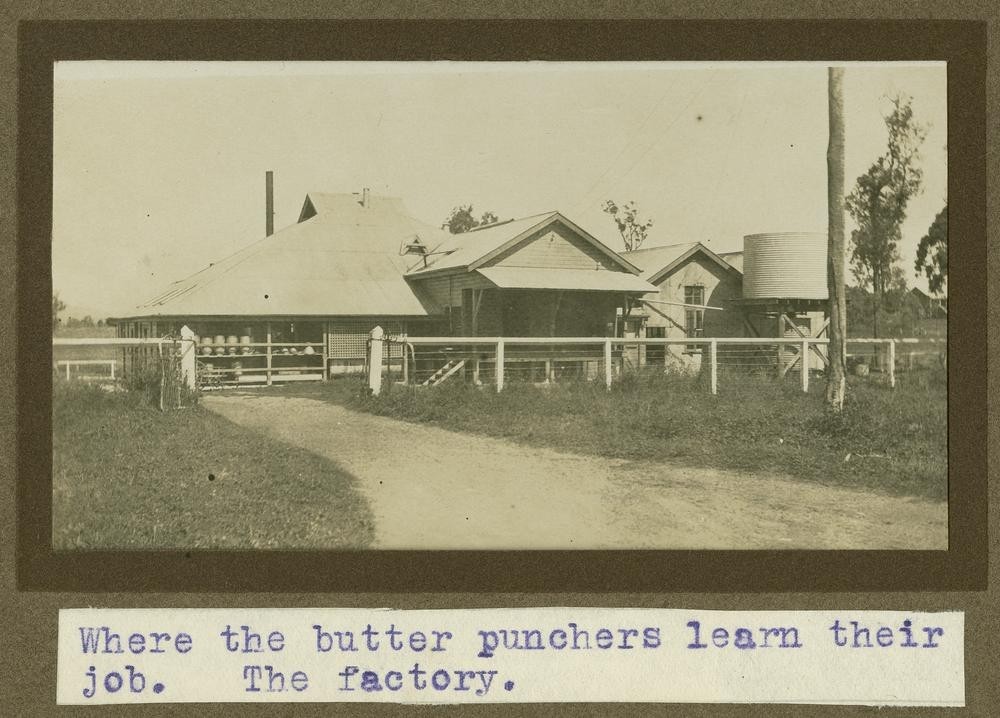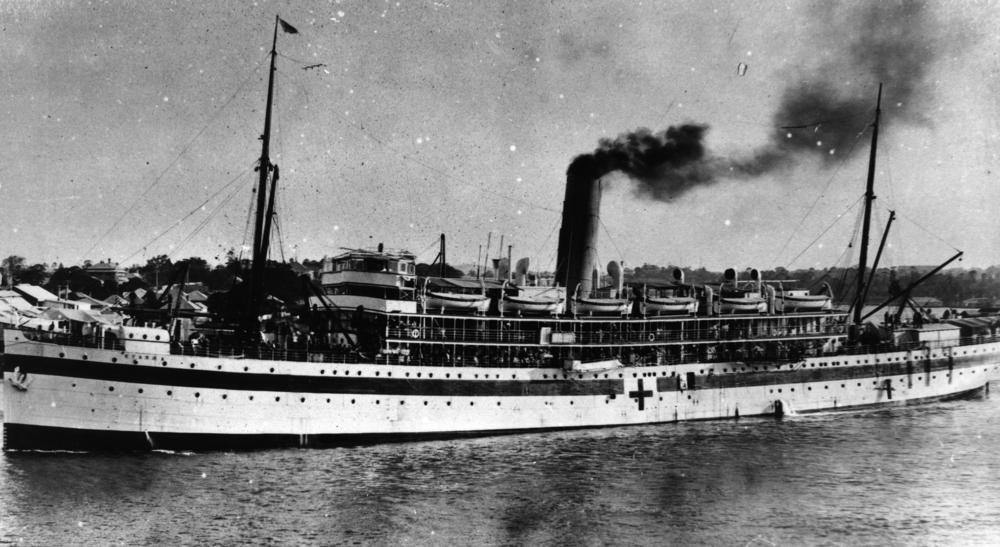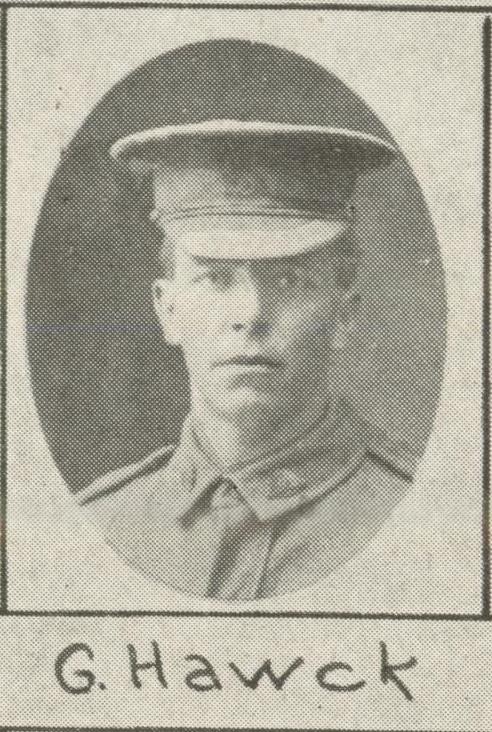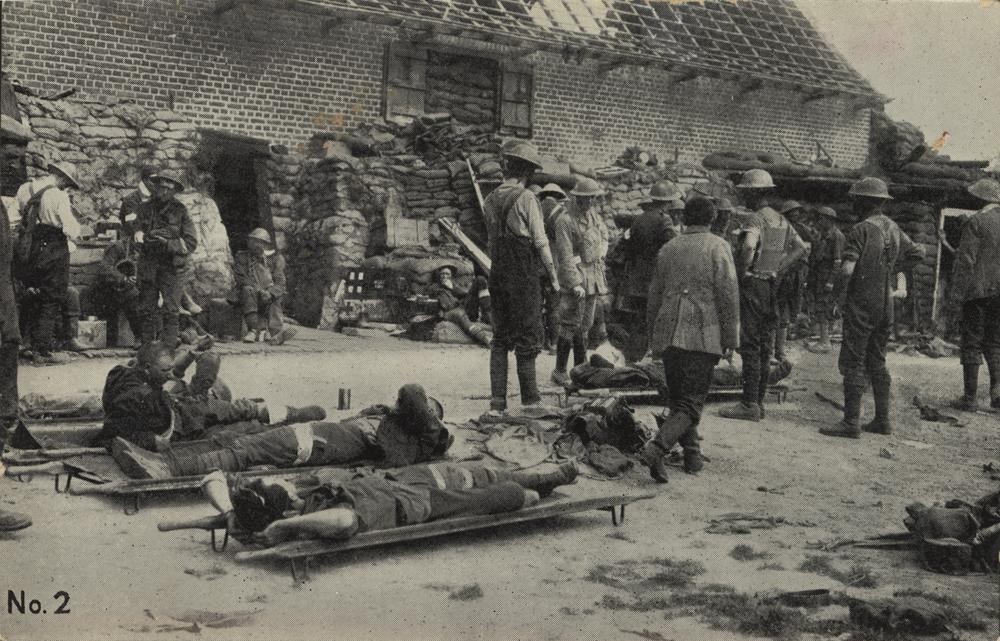Private William ‘George’ Hawck: 4th Pioneer Battalion
By JOL Admin | 17 December 2015

William George Hawck: saluting 100 years of ANZAC history. Lockyer Valley Regional Council BRN: 106059
Guest blogger: Lockyer Valley Regional Council.
Displayed in the ‘Walk of Fame’ inside the Lockyer Valley Cultural Centre, Gatton, are ten photographic portraits of Lockyer Valley locals who fought in the First World War. The portraits formed a component of the recent Queensland Government-sponsored exhibition ‘Queensland Transport Museum Salutes 100 Years of ANZAC’, which was on display in the adjacent Queensland Transport Museum from 11 April to 30 June 2015, and featured First World War motorised and horse drawn machinery.
This post is the eigth in a series which will feature the ten Lockyer locals whose portraits and biographies are in the ‘Walk of Fame’. Where possible, we will supplement their stories with some images from the State Library of Queensland or Australian War Memorial collections. We acknowledge the Lockyer Valley Regional Council, Derek Barry and Russell Tattam for allowing us to share their content, which can also be found on the Lockyer Valley Libraries catalogue and Flickr.

White Bridge at Tenthill near Gatton Queensland, John Oxley Library, State Library of Queensland Neg. 194769
William George Hawck (known as George, and also affectionately as ‘Pop’) was born on April 5, 1894 at Upper Tenthill, the son of Robert Hawck and Mary Hawck (nee Roberson). George grew up on the family farm at Tenthill and rode the district by horseback. He attended school in Gatton and then worked for a shilling a day picking potatoes while “playing wag” from school. He became a carrier for his father Robert, carting firewood to the Gatton Butter Factory with two horses and a table-top wagon.

Butter factory teaching centre at Gatton College ca. 1924, John Oxley Library, State Library of Queensland Image: 6646-0001-0011
George joined the Light Horse as a teenager, serving for four years prior to enlisting in the war. On September 25, 1916 he signed up for active service as a private (service number 3102). George married Elsie Porter on November 11, 1916 but their honeymoon was short and sweet. On November 13, there was a citizens’ farewell for volunteers at the Gatton School of Arts. George and fellow recruit Private R. Whittle were presented with wristlet watches and wished a safe return from the war.

Hospital ship 'Kyarra' leaving Brisbane., 1916, John Oxley Library, State Library of Queensland Neg. 17225
George left Elsie with her parents when he departed Brisbane a few days later on November 17 on the hospital ship HMAT Kyarra, arriving at Plymouth on January 30, 1917. His initial reception was at Sutton Mandeville in Wiltshire before marching out to nearby Fovant army camp on February 24. Eleven months later on January 23, 1918 George arrived in France and was taken on strength with the 7th Reinforcements, 4th Pioneer battalion (4th Division).

Private George Hawck photographed in The Queenslander Pictorial supplement, 23 June 1917
The 4th Pioneers were raised after Gallipoli and prior to deployment to the Western Front, they were engaged in every action undertaken by the 4th Division, starting at Pozieres and Mouquet Farm in mid-1916 through Bullecourt, Messines and Third Ypres in 1917. They stalled the German Spring Offensive of 1918 near Hebuterne and Dernancourt ending in the Hundred Days campaign in late 1918.

Battle of Messines. Anzac Field Dressing Station scene 7 June 1917, John Oxley Library, State Library of Queensland Neg. 194872
Pioneer Battalions were light military combat engineers organised like the infantry and located at the very forward edge of the battle area. They were used to develop and enhance protection and mobility for supported troops. They constructed defensive positions, command posts and dugouts, prepared barbed wire defences and on occasion breached those of the enemy using devices like the Bangalore Torpedo.
George survived the war leaving Plymouth, England on May 1, 1919 aboard the China arriving in Sydney on June 11. He returned to Elsie and to his work as a carrier with his father carting firewood, petrol and general goods around the area. Robert and George’s business grew with George gradually taking over from his father. With the purchase of a 1928 Dodge Utility he was able to transport the orchestras to dances around the district while continuing with his carrying business during the week.

Motor vehicles parked on the grass at the showgrounds Gatton 1920, John Oxley Library, State Library of Queensland Neg. 10507
George and Elsie had two children, Mavis and Allen, and during the Second World War George volunteered his services in Gatton. By the time of his retirement George had a small fleet of trucks in the business, which he handed over to daughter Mavis and her husband Mick Nolan. The business would later become nationally known as Nolan’s Interstate Transport. George enjoyed fishing and spending time with family in his retirement. He passed away in Gatton on May 1, 1981 aged 87.
Comments
Your email address will not be published.
We welcome relevant, respectful comments.